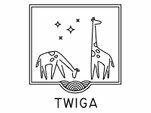Markets

Agricultural Producers
Agricultural producers are the first to profit from TWIGA’s outputs as weather predictions are essential to sowing, irrigation scheduling, and harvesting and improve with enhanced in situ observations. As mentioned earlier, rainfall predictions in Africa are very poor, even at a daily level. This is partly due to the convective nature of most rainfall events, which is difficult to model, but especially due to a lack of measurements of air pressure, wind, and precipitable water vapor. Actually, the convective nature demands a high-density observation infrastructure, which is what the TAHMO network aspires to with one station every 30 km. National meteorological services are TWIGA partners (SAWS, KMD) and supporters (16 national weather services in Africa through TAHMO) and will be the main source of knowledge concerning the observational needs

Insurance Providers
The insurance providers that we target in the first instance, are crop insurance companies. Crop insurance is generally seen as an essential part of the agricultural value chain for smallholders trying to move from subsistence farming to market-oriented production. Insurance allows farmers to have a risk management strategy that targets average years as they are no longer losing all in case of a dry devastating year. Productivity increase estimates caused by crop insurance in Africa run from 20% to 35%. Crop insurance is common in western countries where farms are large enough to have insurance agents visit individual farms

Energy Providers
Energy providers will be important end-users, also because the cost/benefit of weather, water, and climate services are very clear and can often be expressed inkWhs lost or gained. Renewable energy production will be our main focus: hydropower, solar/photovoltaic (PV), and wind. Only 2% of Africa’s hydropower potential has been harnessed so far. Large-scale opportunities are well-known and subject to debate, but much less is known about the potential of small-scale community run-of-the-river hydropower solution, where we expect TWIGA will have the most impact. In an operational sense, two modes are relevant. First are state and predictions to estimate near-future energy production. By better assessment of weather and water in a watershed, hydropower companies will be able to better operate their reservoirs, and PV and wind farms will know better what to expect. It will not only be possible to provide data about one’s own installations but also about those of other companies. In all, the energy mix will become more reliable, supporting climate mitigation in Africa. Second, are services concerning the maintenance of, especially, wind and PV By providing wind and radiation data in near-real-time, actual energy production can be compared to what should have been produced, triggering maintenance in case of gaps.

Drinking Water Companies
Drinking water companies are of extreme socioeconomic importance in a continent where 319 million people do not have access to safe and reliable household water. In most countries, the burden of providing household water lies on women, who spend much of their time walking to and from water sources. There are several ways in which TWIGA can support water companies. First, reservoir management can be supported in a similar way as for hydropower companies with actual and expected inflows. Second, groundwater recharge is a good measure of the sustainable yield of aquifers used for drinking water. Third, water demand in urban areas is closely linked to reference evaporation, the drier and hotter a city is, the higher water consumption will be.

Disaster and natural hazard Managers
Disaster and natural hazard managers are mainly found within specialized government agencies and NGOs, such as the Red Cross and Red Crescent. Drought is an important and prominent natural disaster in Africa but it is a slow and widespread process for which many well-developed early warning services exist. Although TWIGA will produce its own drought maps based on in situ and satellite data, they mainly serve other sectors such as insurance and drinking water companies. Instead, we will focus on hazards associated with excess water, such as (flash) floods, mud streams, and landslides, for which no Geo-information services exist. Again, the combination of satellite data, especially the more and more frequently available Sentinel SAR data, and in situ data on rainfall and storms will be important to quickly deliver information on affected areas.

